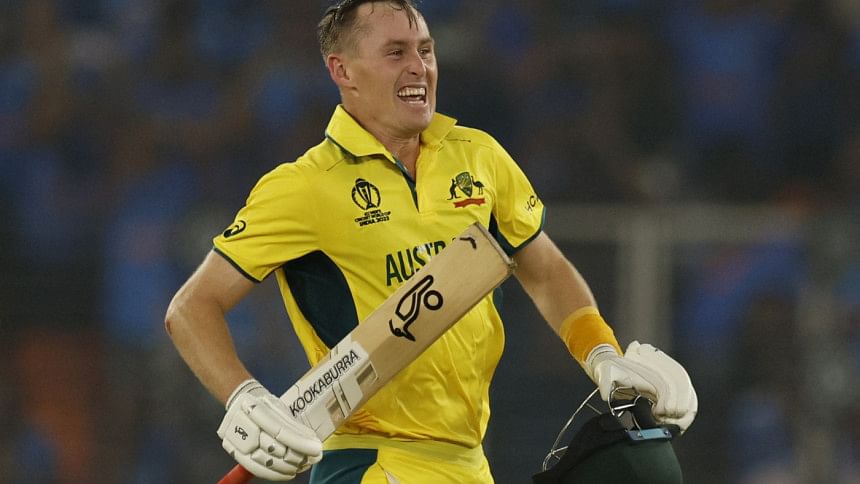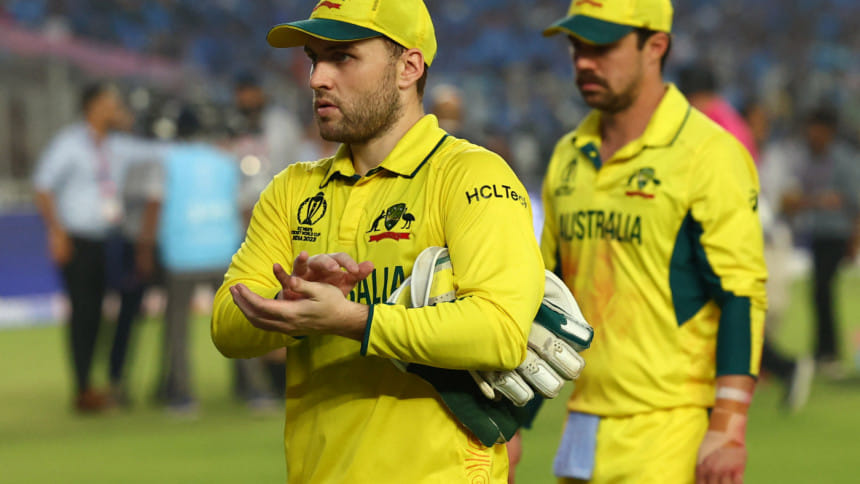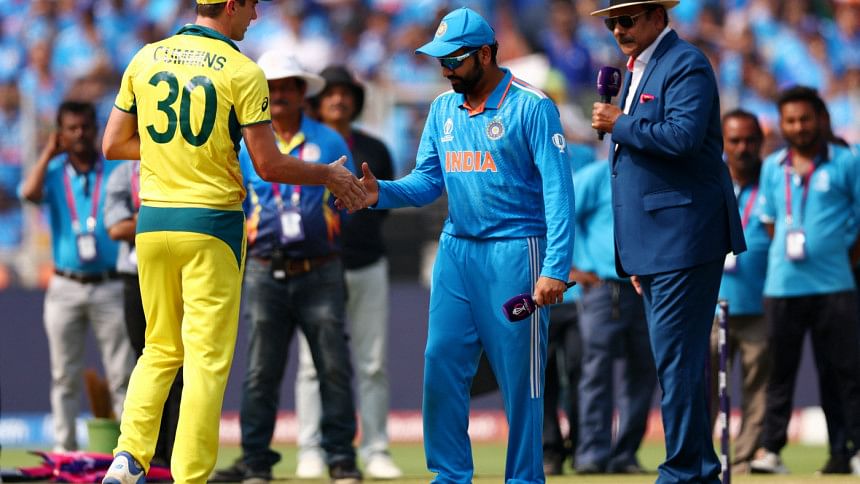Five risky calls that won Australia a World Cup

Australia's World Cup winning campaign in India was an against-the-odds triumph. Pat Cummins and his men stunned favourites India in the final to take the Aussies to the top of the cricketing world for the sixth time.
The Australian team's clarity of thought helped them recover from a sluggish start to the tournament and the several gutsy calls they took during the competition set them on course for triumph.
Cricket Australia took a deep dive into Australia's World Cup campaign in India and pointed out the five biggest risks the world champions took in the tournament-
Carrying an injured Travis Head
The first bold call of Australia's triumphant World Cup campaign was at best a surprise, and at worst derided as 'desperate'.
When a searing Gerald Coetzee bouncer broke Travis Head's hand three weeks out from the tournament, it was considered a huge blow to Australia's chances given the potent opening partnership Head had formed with David Warner.

But while many, including Cummins, began to consider who would replace the left-hander, McDonald had other ideas.
"We thought his World Cup was straight over," Cummins explained after the final.
"It wasn't until about the next night afterwards where 'Ronnie' (McDonald) came up to me. He's like, 'I haven't slept all last night – I think we're going to keep him. We're going to take the risk – if we're going to make the finals and we want to win the World Cup I think he needs to be there for the finals'.
"It was his idea and great work by the medical team. That was a big risk. I think we could have been made to look really silly if that didn't pay off, but you've got to take those risks to win a tournament."
The risk paid off – in spades.
Selecting Marnus Labuschagne

Such was Marnus Labuschagne's standing in selectors' minds prior to the World Cup, the Test star was not only initially out-of-mind for Australia's final squad of 15 but was also left out of an extended 18-man group selected prior to the tournament.
The fact that, from this snub onwards, he played 19 games consecutive games up to and including the World Cup final where he played a crucial role in Australia's victory, is nothing short of incredible.
The 'bold' aspect of the call comes from the doubts many had in naming Labuschagne and Steve Smith – batters with strike rates of 83.1 and 87.3 respectively – in the same XI.
However, on increasingly difficult wickets in India he was viewed as a crucial middle-order 'banker' who could absorb pressure at the right times.
Elevating Josh Inglis early

The decision to drop wicketkeeper Alex Carey just one game into the World Cup campaign was immediately contentious.
After a string of low scores leading into the tournament, before a duck against India in Australia's opening match, the selectors opted for immediate change, picking Josh Inglis for the second match against South Africa.
And the move paid off.
Inglis' glovework was tidy throughout the entire campaign, culminating in five catches against India on Sunday – a World Cup final record.
Perhaps more notably, he made crucial contributions with the bat including a half-century against Sri Lanka in an early crunch clash, and a nerveless 28 under huge pressure against South Africa in the semi-final.
Heaping responsibility on Glenn Maxwell

The decision to leave Ashton Agar out of Australia's 15-man World Cup squad allowed selectors to pick Labuschagne, however it placed enormous pressure on Glenn Maxwell as Australia's No.1 finger spinner in India.
Maxwell was no stranger to being handed responsibility with the ball, having been Australia's No.1 spinner in their 2015 World Cup-winning campaign, however in India this was a different proposition.
Three of the eventual semi-finalists each had a specialist finger-spinner; Ravindra Jadeja (India), Mitchell Santner (New Zealand) and Keshav Maharaj (South Africa).
Australia had batting all-rounder Maxwell.
And when you consider he had hardly bowled throughout 2023 owing to his recovery from a broken leg suffered in November 2022, it was a significant role to throw his way.
But the Aussies backed in Maxwell from the outset.
And he repaid their faith, finishing as the most economical (4.81 runs per over) of the team's frontline bowlers.
Bowling first in the final

Finally, the gutsiest call of them all.
Pat Cummins knew bowling first in a World Cup final carried enormous risk, and should it backfire could even pit him among former captains whose bad decisions at the toss continue to haunt them to this day.
But he did it anyway.
Backing his bowlers to fire in the afternoon heat when the Ahmedabad surface was drier, Cummins calculated that batting could become more straightforward during the evening when predicted dew would arrive.
And he was proven exactly right, not only prophetic in how the game played out but leading the way himself with the ball (2-34 from 10 overs).

 For all latest news, follow The Daily Star's Google News channel.
For all latest news, follow The Daily Star's Google News channel. 









Comments